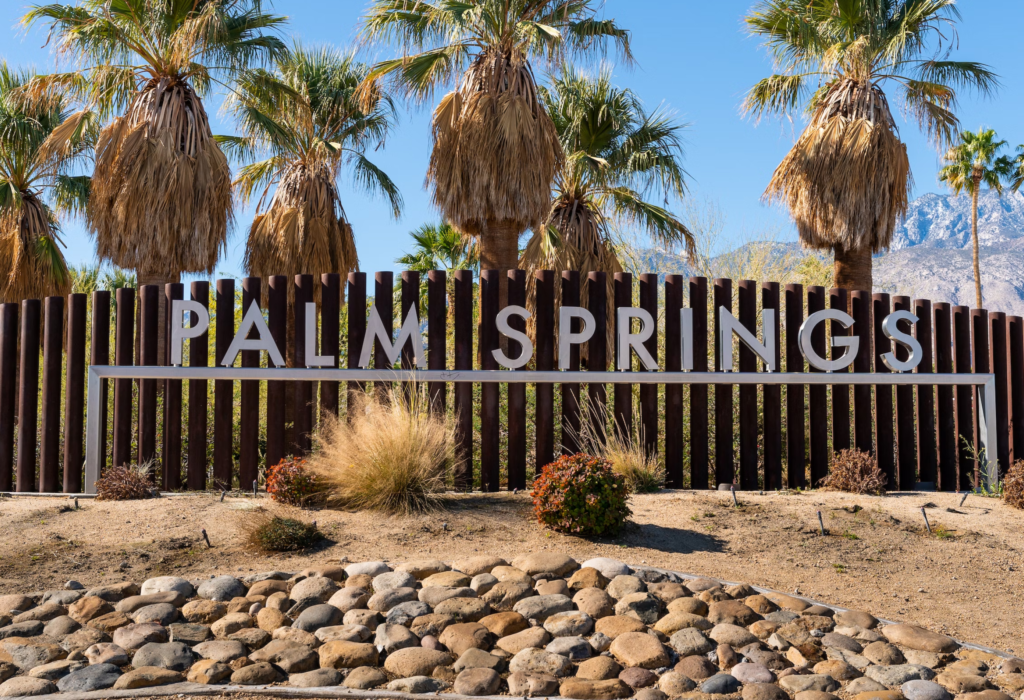
In the rapidly evolving landscape of business, digital marketing has emerged as a pivotal tool for driving success. Local companies, in particular, are recognizing the
Table Of Contents
The sales funnel is a useful and crucial component of any successful business strategy. It allows you to guide potential customers through a structured process that ultimately leads to conversions and sales. In this article, we will explore the key steps involved in building a sales funnel to maximize your business's revenue and growth. When you build an effective marketing funnel, you can scale your business revenue by hiring sales rep and developing a sales team to follow the systems and processes that you create. We will also discuss sales funnel examples and share a sales funnel template. These funnels are successful regardless of the type of sales and services your business offers.
A sales funnel is a visual representation of the customer journey from initial contact to the final conversion. It consists of several stages, each serving a specific purpose in the sales process. These stages include awareness, interest, decision-making, and closing the sale. By designing your sales funnel with precision, you can effectively move potential customers through these stages and increase the likelihood of a successful conversion. The top of the sales funnel and each stage of the funnel can serve a distinct purpose in marketing and sales. A Funnel is a useful tool and building your sales funnel with your existing online networks can prove to be very lucrative and have high funnel conversion rates.
LinkedIn is a social media platform designed specifically for professionals. It allows individuals to create professional profiles, connect with peers and industry experts, join relevant groups, and share valuable content. With its focus on business networking, LinkedIn provides a unique environment for building relationships and generating leads. LinkedIn can be used to develop and nurture leads at various stages of your sales funnel. A sales funnel is a marketing tool that outlines steps in your sales process. A funnel also acts as a hub for all your new and nurtured leads. Your overall sales are sure to increase when you patch leaks in the sales funnel and push leads from your LInkedIn network to the top of your funnel.

A well-designed sales funnel allows you to nurture leads, build relationships, and guide prospects toward making a purchase decision. It helps you understand your customers' needs and pain points, enabling you to tailor your marketing messages and offers accordingly. With a sales funnel in place, you can optimize your marketing efforts, increase efficiency, and achieve better results. A funnel is a marketing term used to describe the process of converting potential customers into actual customers. It represents the various stages a consumer goes through before making a purchase. The funnel is divided into different sections, with each section representing a step in the customer journey. The top of the funnel is the awareness stage, where the customer becomes aware of a particular product or brand through various marketing efforts. The middle of the sales funnel is the consideration stage, where the customer evaluates different options and weighs the pros and cons. The bottom of the funnel is the decision stage, where the customer makes a final decision to purchase the product or service. The purpose of the funnel is to guide customers through the buying process and increase the likelihood of conversion. Marketers use different strategies at each stage to attract, engage, and persuade customers, ultimately leading to a successful conversion.
Download Our Free SEO-Checklist Today!
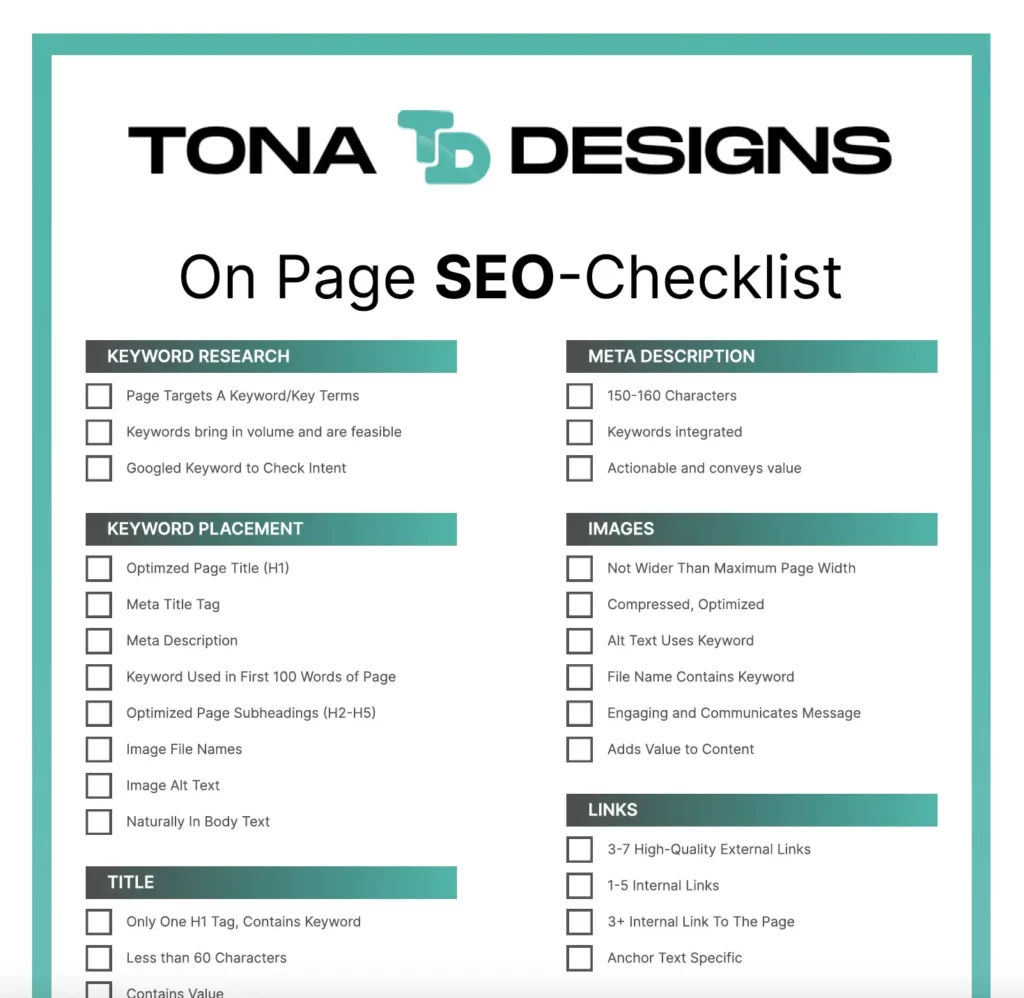
Take advantage of this opportunity to optimize your website’s performance, drive organic traffic, and boost your online visibility. Join our newsletter community and start reaping the benefits of our Free SEO Checklist today!

LinkedIn can be a highly effective platform for building a sales funnel for your business. With its professional networking focus, LinkedIn allows you to connect with potential clients and build relationships with them. By utilizing LinkedIn's features such as groups, posts, and messaging, you can establish yourself as an industry expert and gain credibility in your field. Posting relevant content and engaging with others' posts can help attract your target audience and generate interest in your business. Additionally, LinkedIn provides an opportunity to showcase your products or services through your profile and company page. By strategically optimizing your profile and utilizing keywords, you can increase your online visibility and attract more leads. The powerful search capabilities of LinkedIn also enable you to find and reach out to specific prospects that fit your ideal customer profile. Overall, leveraging LinkedIn as part of your sales funnel strategy can help you build a network of qualified leads and ultimately drive more sales for your business.
To effectively leverage LinkedIn for your sales funnel, it's essential to optimize your profile, expand your network, and engage with your connections. Let's explore each step in detail:
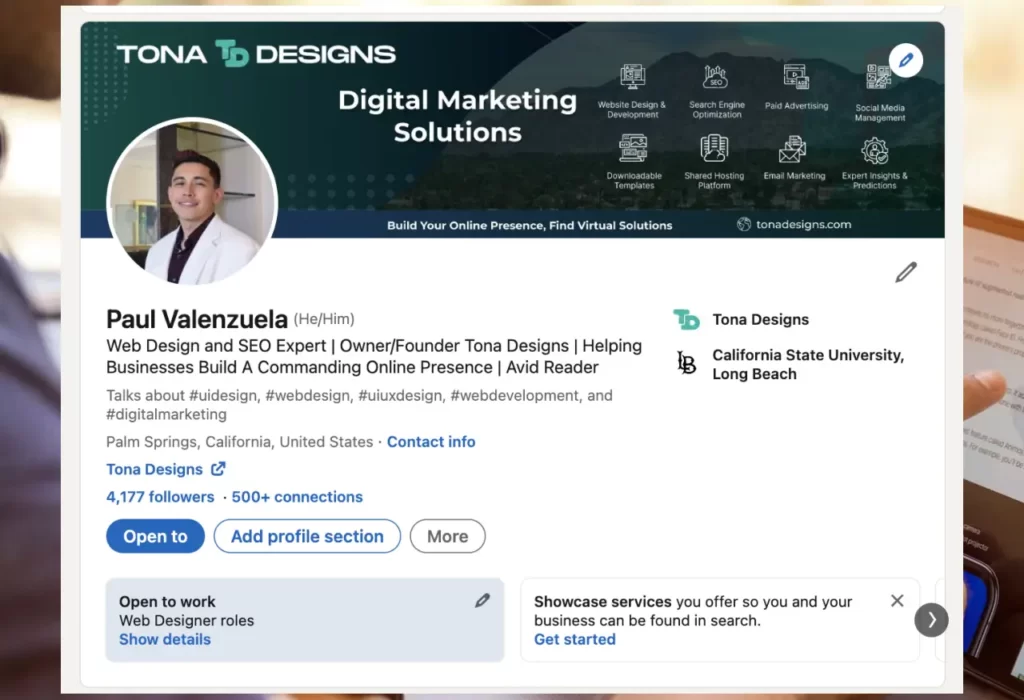
LinkedIn has emerged as a powerful platform for professionals to connect, engage, and build relationships. With its vast user base of over 700 million professionals, LinkedIn provides a unique opportunity to leverage its potential for sales and business growth. By implementing an effective sales funnel on LinkedIn, you can attract, engage, and convert leads into loyal customers. In this article, we will explore the process of building a successful sales funnel using LinkedIn and how it can benefit your business.
Sales funnels are a series of steps that guide potential customers through the buying journey. They typically consist of different stages, such as awareness, interest, consideration, and conversion. The primary goal of a sales funnel is to turn prospects into paying customers by nurturing them with valuable content and personalized interactions.
Download Our Free SEO-Checklist Today!

Take advantage of this opportunity to optimize your website’s performance, drive organic traffic, and boost your online visibility. Join our newsletter community and start reaping the benefits of our Free SEO Checklist today!

The Sales Funnel Stages of LinkedIn Sales Funnel Process The sales funnel stages of the LinkedIn sales funnel process can be divided into four key stages: awareness, interest, consideration, and conversion. In the awareness stage, the goal is to attract the attention of potential customers and create brand awareness. This can be achieved through targeted ads, content marketing, and engaging with relevant LinkedIn groups. Once a potential customer is aware of the brand, the next stage is to generate interest. This can be done by offering valuable content, sharing success stories, and providing educational resources. The consideration stage is where potential customers evaluate the brand and its offerings. This is the time to provide more detailed information, answer any questions, and address any objections. Finally, the conversion stage is the point where a potential customer becomes a paying customer. This can be achieved through personalized offers, special discounts, and clear calls-to-action. By understanding and implementing these sales funnel stages, businesses can effectively nurture leads and convert them into loyal customers.
To effectively leverage LinkedIn for your sales funnel, it's essential to optimize your profile, expand your network, and engage with your connections. Let's explore each step in detail:
Your LinkedIn profile serves as your online resume and can significantly impact your credibility. Ensure that your profile is complete, highlighting your experience, skills, and achievements. Use a professional profile picture and craft a compelling headline that reflects your expertise and value proposition.
Building a strong network on LinkedIn is crucial for reaching a wider audience and increasing your chances of connecting with potential leads. Connect with colleagues, industry peers, clients, and prospects. Personalize connection requests to establish a genuine connection.
Once you have a solid network, engage with your connections by regularly sharing valuable content, commenting on their posts, and congratulating them on their achievements. This helps you stay top-of-mind and build rapport with your connections.
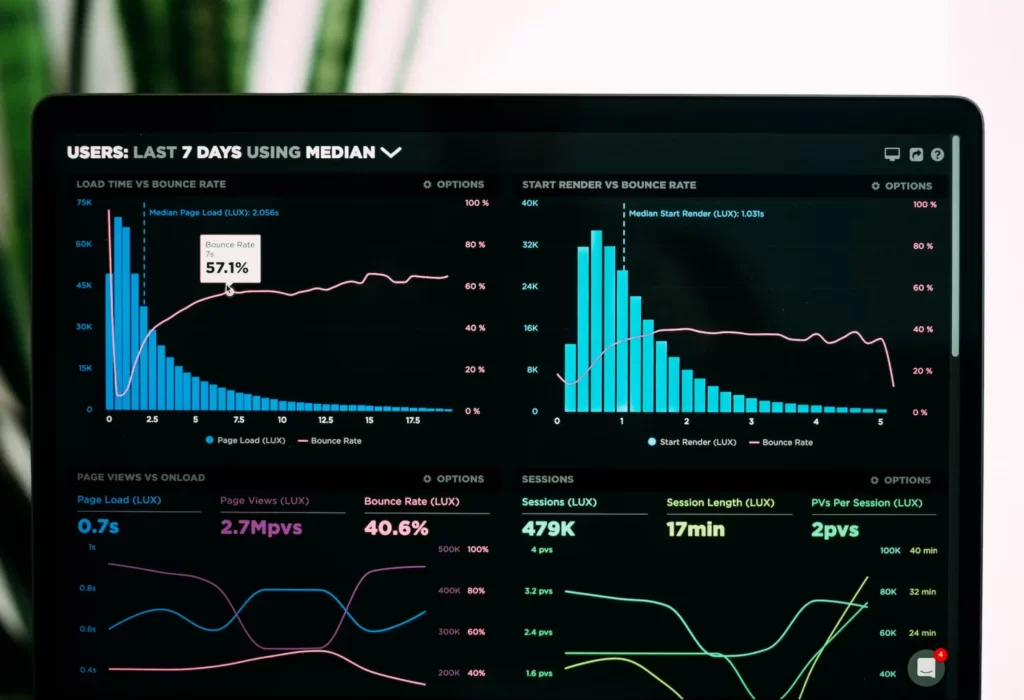
The first stage of the sales funnel is creating awareness. On LinkedIn, you can generate awareness by sharing valuable insights, tips, and thought leadership content. Consider the following strategies:
Share industry insights, tips, and best practices that resonate with your target audience. Position yourself as an expert and provide value through your content. This helps build trust and establishes your credibility.
LinkedIn allows you to publish long-form articles, providing a platform to showcase your expertise. Write informative and engaging articles that address your audience's pain points and offer practical solutions.
Join LinkedIn groups relevant to your industry or target audience. Engage in discussions, answer questions, and share valuable insights. This helps you expand your reach and connect with potential leads. Sales and marketing teams are constantly looking in LinkedIn groups to offer free trials, resources, and discounts on their products and services. Participating in online forums is a sales strategy that pays dividends long term in the sales cycle.
Download Our Free SEO-Checklist Today!

Take advantage of this opportunity to optimize your website’s performance, drive organic traffic, and boost your online visibility. Join our newsletter community and start reaping the benefits of our Free SEO Checklist today!

Once you have created awareness, it's time to capture the interest of your leads. Here's how you can generate interest stage leads on LinkedIn:
Use LinkedIn's advanced search features to identify potential leads based on criteria such as industry, job title, and location. Narrow down your search and reach out to individuals who fit your target customer profile. A B2B sales funnel can also help you get a better understanding of your ideal client avatar. By the second stage of the sales funnel, you only want to be working with viable candidates and nurtured leads to make sales efficiently.
Initiate conversations with your target audience by sending personalized messages. Show genuine interest in their work and ask thoughtful questions. This helps you build rapport and establish a connection. You funnel may lead you to building strong networking connections and references.
Provide valuable resources, such as e-books, whitepapers, or webinars, as lead magnets. Offer them in exchange for contact information, allowing you to capture leads and continue nurturing them.
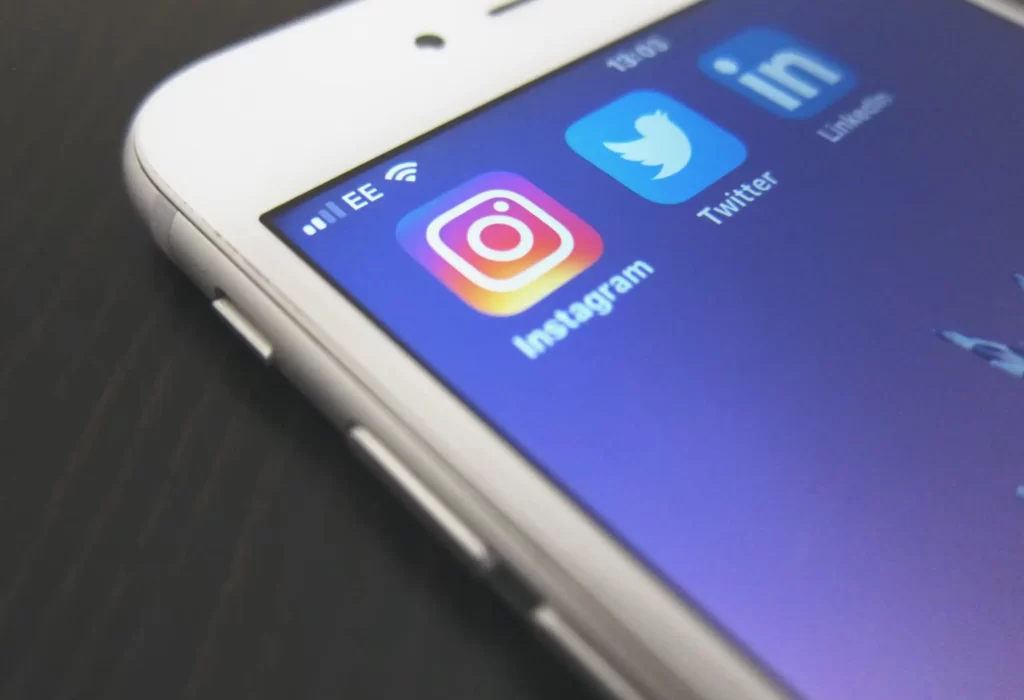
Once you have captured leads, it's essential to nurture them through the sales funnel. Here are some strategies for lead nurturing on LinkedIn:
Send personalized messages to your leads, addressing their specific pain points and offering solutions. Avoid generic messages and tailor your approach based on their interests and needs.
Continue sharing valuable content with your leads to keep them engaged. This can include articles, industry news, case studies, or success stories. Position yourself as a trusted advisor and resource.
Provide opportunities for your leads to engage with your offerings. Offer free consultations, demos, or trials to showcase the value of your product or service. This helps build trust and moves leads closer to conversion. Free sales incentives help you grab leads by offering the user something of value. This can include terms such as "download our free _", or "book a free consultation today" etc.
The ultimate goal of the sales funnel is to convert leads into paying customers. On LinkedIn, you can drive conversions through the following strategies:
Initiate sales conversations by scheduling calls or meetings with your qualified leads. Understand their needs, address any objections, and present how your offering can solve their challenges. A sales funnel's success depends on the presence of cracks in your sales funnel. A basic sales funnel should always make room for cold calling and scheduled calls/meetings. The traditional sales funnel relies heavily on cold calling. However in the modern information era, there are much more effective ways to create a sales lead through effective marketing.
Craft compelling offers tailored to your leads' needs. This can include discounts, special promotions, or exclusive access to premium content. Create a sense of urgency to encourage prompt action. All four sales funnel stages relies on leads constantly being interested in your services and expertise. A funnel without nurtured leads is a marketing sales disaster. A funnel takes a constant inflow of nurtured leads to function effectively.
Consistent follow-up is crucial for closing deals. Set reminders to follow up with your leads and provide additional information or answer any questions they may have. Be proactive and responsive throughout the process.
Download Our Free SEO-Checklist Today!

Take advantage of this opportunity to optimize your website’s performance, drive organic traffic, and boost your online visibility. Join our newsletter community and start reaping the benefits of our Free SEO Checklist today!

To ensure the effectiveness of your LinkedIn sales funnel, it's essential to analyze and optimize your strategies. Consider the following steps:
Monitor key engagement metrics such as profile views, connection requests, post engagement, and click-through rates. Analyze the data to identify trends and areas for improvement.
Experiment with different content formats, messaging approaches, and targeting criteria. A/B test your strategies to determine what resonates best with your audience. Continuously refine your approach based on the insights gained.
A sales funnel for LinkedIn can be a powerful tool for generating leads and converting them into customers. The first step is to create an attractive LinkedIn profile that showcases your expertise and establishes credibility. This can include a professional headshot, a compelling headline, and a detailed summary of your skills and experience. The next step is to actively engage with your target audience by sharing valuable content and building relationships with potential leads. This can be done through posting relevant articles, commenting on others' posts, and participating in LinkedIn groups. Once you have built a relationship with a lead, you can move them through the funnel by offering a lead magnet, such as a free guide or webinar, in exchange for their contact information. This allows you to continue nurturing the lead and providing them with valuable information and offers. Finally, when the lead is ready to make a purchase, you can convert them into a customer through personalized sales pitches and offers. By using a sales funnel strategy on LinkedIn, you can effectively reach and convert your target audience.
A LinkedIn sales funnel template is a strategic tool that helps businesses generate leads, nurture relationships, and convert prospects into customers on LinkedIn. It acts as a step-by-step guide to streamline the entire sales process by defining the actions and stages required to move a lead through the funnel. The template typically includes four main stages: awareness, interest, consideration, and conversion. In the awareness stage, businesses focus on building brand awareness and attracting potential leads by creating engaging content and optimizing their LinkedIn profile. The interest stage involves nurturing these leads by providing valuable insights, personalized messaging, and building relationships through direct messaging and engagement with their posts. The consideration stage is all about converting these leads into customers by offering relevant solutions and addressing their pain points. The final stage, conversion, involves guiding the prospect to take a specific action, such as signing up for a newsletter, requesting a demo, or making a purchase. Overall, a LinkedIn sales funnel template helps businesses strategically leverage the power of LinkedIn to grow their customer base and boost their sales. Understand the sales funnel and develop a stronger concept of sales models.
LinkedIn offers immense opportunities for building a successful sales funnel. By optimizing your LinkedIn profile, expanding your network, and engaging with your connections, you can attract and nurture leads effectively. Remember toprovide valuable content, capture interest, nurture leads, and convert them into customers. Regularly analyze and optimize your strategies to maximize results. With dedication and a well-executed sales funnel, LinkedIn can become a powerful tool for driving business growth.
Building a sales funnel is a powerful way to streamline your marketing efforts and drive meaningful results. By understanding your customers, attracting their attention, nurturing their interest, and guiding them through the decision-making process, you can significantly increase your chances of converting leads into paying customers. Remember to continuously optimize and adapt your sales funnel based on data and customer feedback to ensure ongoing success.
Can I use LinkedIn for sales if I'm not in a B2B industry? Yes, LinkedIn can be beneficial for sales regardless of the industry. While it's true that LinkedIn has a strong focus on professional networking, many professionals from various industries use the platform. You can still connect with potential clients, share valuable content, and build relationships.
How often should I post on LinkedIn for optimal engagement? The frequency of your posts depends on your audience and the nature of your content. Aim for consistency rather than excessive posting. Posting valuable content a few times a week is generally sufficient. Monitor engagement metrics to determine the posting frequency that works best for you.
Should I accept connection requests from everyone on LinkedIn? It's important to be selective when accepting connection requests. Connect with individuals who are relevant to your industry, potential clients, or those with whom you have a genuine professional interest. Quality connections are more valuable than a large number of irrelevant connections.
Is it necessary to pay for LinkedIn Premium to leverage the platform for sales? While LinkedIn Premium offers additional features and enhanced visibility, it's not mandatory to pay for it. You can still achieve great results using the free version of LinkedIn. Focus on building a strong profile, providing valuable content, and engaging with your connections.
How long does it take to see results from a LinkedIn sales funnel? The timeline for seeing results can vary based on various factors such as your industry, target audience, and the effort you put into your LinkedIn strategy. Building relationships and generating leads takes time. Consistency, patience, and ongoing optimization will contribute to the success of your LinkedIn sales funnel.
What is the purpose of a sales funnel? A sales funnel helps businesses attract, engage, and convert potential customers into paying clients by guiding them through a structured process.
How can I attract more customers to my sales funnel? To attract more customers, focus on creating valuable content, leveraging social media platforms, and implementing lead generation techniques.
What are some effective lead generation techniques? Effective lead generation techniques include offering lead magnets, using opt-in forms, and creating compelling landing pages.
How do I create persuasive sales pages? To create persuasive sales pages, clearly communicate the value of your offering, highlight customer testimonials, and include strong calls-to-action.
Why is customer retention important in a sales funnel? Customer retention is important because it helps businesses build long-term relationships, increase customer lifetime value, and generate positive word-of-mouth referrals.
What is the purpose of a sales funnel?
A sales funnel helps businesses guide potential customers through a structured process, from initial awareness to making a purchase, with the goal of increasing conversions and sales.
How can I attract more customers to my sales funnel?
To attract more customers, focus on creating valuable content, leveraging social media platforms, implementing lead generation techniques, and optimizing your marketing efforts.
What are some effective lead generation techniques?
Effective lead generation techniques include offering lead magnets, using opt-in forms and landing pages, conducting webinars, and engaging in content marketing.
How do I create persuasive sales pages?
To create persuasive sales pages, clearly communicate the unique value proposition of your offering, provide social proof through testimonials, and use strong and compelling calls-to-action.
Why is customer retention important in a sales funnel?
Customer retention is important because it helps businesses build long-term relationships, increase customer lifetime value, and generate positive word-of-mouth referrals.
How To Improve Your Website’s Loading Speed Through Design
Minimizing HTTP requests
Optimizing images
Compressing files
Reducing the use of external resources
Using content delivery networks (CDNs)
Leveraging browser caching
Using lazy loading
#WebDesign #DigitalMarketing #SEO #UserExperience #BrandIdentity #tonadesigns
May 19

The Do’s and Dont’s of Website Design for Small Businesses
When it comes to designing a website for a small business, there are certain do’s and don’ts that should be followed to ensure that the website is effective and meets the needs of the business. In this article, we will explore some of these do’s and don’ts to help small business owners create a website that is both functional and visually appealing.
#WebDesign #DigitalMarketing #SEO #UserExperience #BrandIdentity #tonadesigns
May 16

Motivational Quote For Your Hump Day!
“ If you want a thing done well, call on some busy person to do it. Busy people are generally the most painstaking and thorough in all they do ” - Napoleon Hill
#business #entrepreneur #businesstips #digitalmarketing #businessstrategy #success #motivation #grantcardone
Mar 1

8 Tips for Starting Your First Business!
Swipe to learn more →
Thank you for reading!
#business #entrepreneur #businesstips #digitalmarketing #businessstrategy #elonmusk #grantcardone #billionaire #patrickbetdavid #tonyrobbins #valuetainment #businesstips #smallbusiness #palmsprings #coachellavalley #tonadesigns #tonabusinessblog
Feb 28

11 Secrets for Growing Your Business Quickly
1. Hire The Right People
2. Focus on established revenue sources.
3. Reduce your risks.
4. Be adaptable
5. Focus on your customer experience.
6. Invest in yourself.
7. Always think ahead.
8. Prioritize Customer Service
9. Establish a social media presence
10. Attend networking events.
11. Research your competitors.
Thank you For Reading!
#businessgrowth #business #entrepreneur
Feb 1


In the rapidly evolving landscape of business, digital marketing has emerged as a pivotal tool for driving success. Local companies, in particular, are recognizing the

What are backlinks? How to Get Backlinks in SEO. Off-Page Backlink and Types of Backlinks Explained.
Understanding Backlinks: The Cornerstone of SEO Success In the ever-evolving landscape of digital marketing, the term “backlinks” has become nothing short of a buzzword. Yet,

What is ROI? Return on Investment Explained
In the world of business, understanding your investments’ returns is crucial. ROI, or Return on Investment, is a fundamental metric that helps businesses measure the
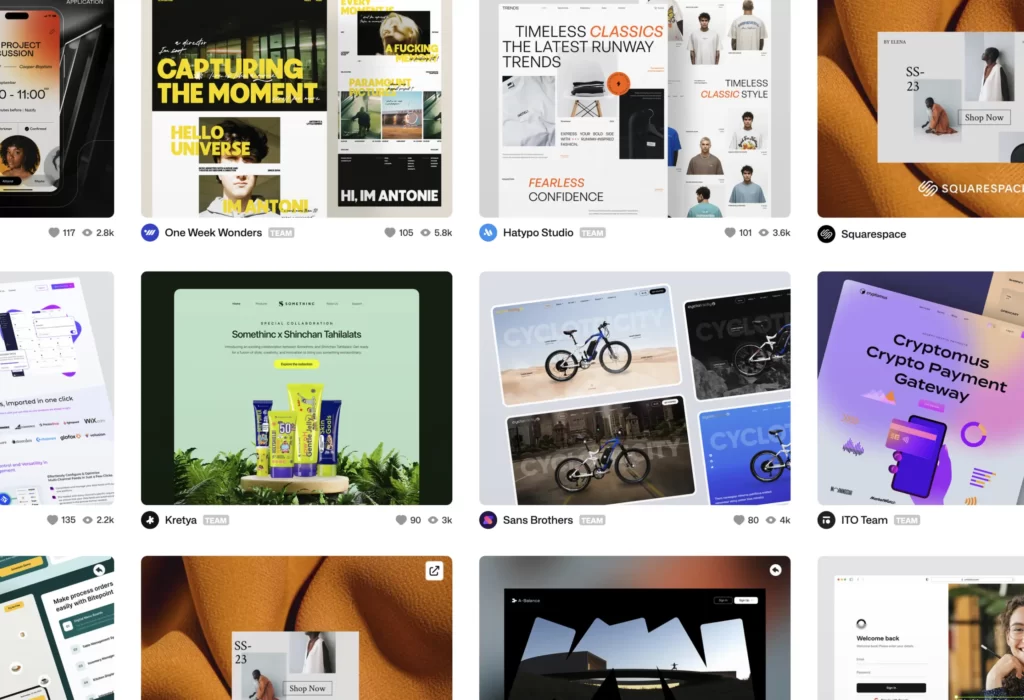
Web design is a captivating journey into the digital world that involves creativity, functionality, and innovation. If you’re new to the concept of web design,
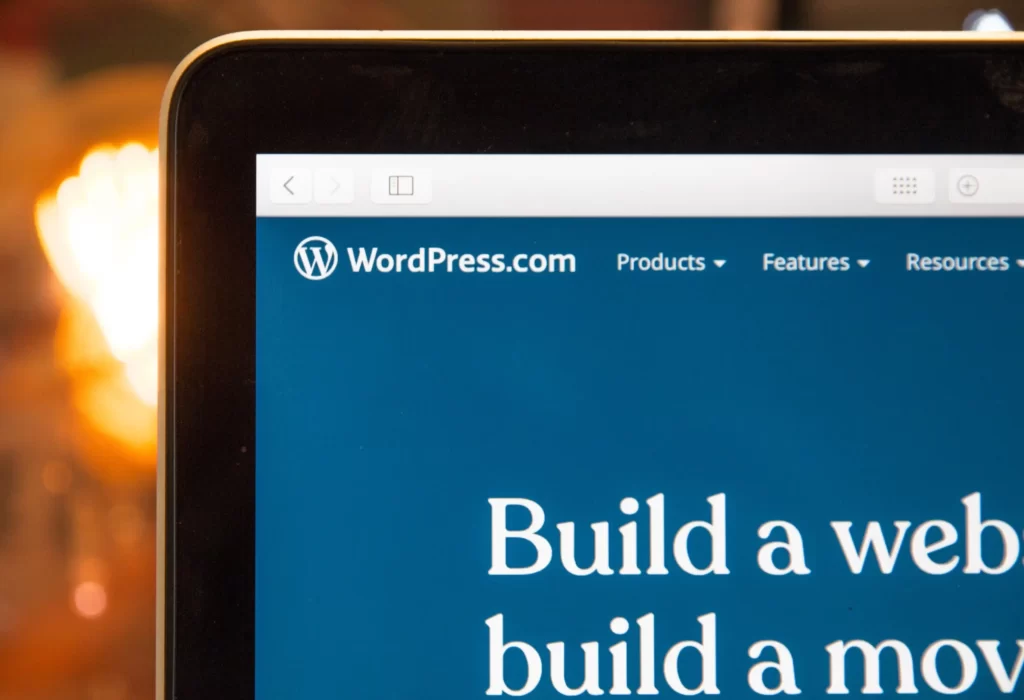
WordPress has emerged as one of the most popular content management systems (CMS) and website-building platforms globally. It empowers both beginners and experienced users to

How Digital Marketing Can Scale Your Business. Grow With A Digital Marketing Agency
Introduction In today’s fast-paced and technology-driven world, digital marketing has become an indispensable tool for businesses seeking growth and scalability. By harnessing the power of
Take the First Step
Why not take the first step today and entrust Tona Designs with the creation of a professional and elegant website design for your business? Our experienced team is dedicated to crafting visually stunning and highly functional websites tailored to your specific business needs.
Website Design Frequently Asked Questions
Web design primarily revolves around the visual and experiential aspects of a website, ensuring it is user-friendly and visually appealing. On the other hand, web development takes place in the background, involving tasks such as software development, coding to establish the website’s structure, and resolving any issues or glitches. When it comes to creating a business website, most web designers are equipped to handle the necessary web development tasks as well.
The cost of our expert web design team is determined by the complexity of the project. Our pricing typically ranges between $60 and $80 per hour, taking into account the team’s experience and the scale of the website required. Based on these factors, clients can expect to invest between $1,000 and $5,000 for the creation of a new business website.
Website builders are convenient online platforms that allow you to develop websites without the need for coding knowledge or investing significant amounts in web designer fees. You’ll find specialized ecommerce website builders like Shopify, tailored for building online stores, as well as versatile builders like Wix, suitable for non-ecommerce websites. While our team possesses expertise in various development techniques, ranging from HTML/CSS to SquareSpace, our preferred choice is WordPress. We utilize premium plugins and implement custom CSS to ensure swift, efficient, easily customizable, and visually impressive websites.
The significance of web design lies in its potential to influence business performance. A website that is poorly designed and challenging to navigate can tarnish your brand’s image and potentially lead to a decline in sales. On the other hand, a professionally crafted and user-friendly website has the power to engage visitors, prolong their stay, and ultimately boost sales. With an estimated 2.14 billion individuals projected to engage in online purchasing in 2023, seizing this opportunity is imperative to avoid missing out on potential growth.
When seeking the ideal web design company for your business, it’s essential to begin by evaluating the specific type of website you require and determining the objectives you want your new site to accomplish. Additionally, take into account your budgetary constraints. Subsequently, conduct an online search for companies operating within your local area, and carefully assess customer testimonials and reviews to ascertain that your selected agency possesses a demonstrated history of success.
Visual Appeal: The visual design of a website should be aesthetically pleasing, using colors, typography, and imagery that align with the brand identity and target audience.
Responsive Design: Websites must be designed to be responsive, meaning they adapt and display correctly across various devices and screen sizes, including desktops, tablets, and smartphones.
Intuitive Navigation: Visitors should be able to easily navigate through the website and find the information they are looking for without confusion or frustration. Clear and organized menus, breadcrumbs, and search functionality contribute to intuitive navigation.
Fast Load Times: Slow-loading websites can significantly impact user experience and lead to high bounce rates. Optimizing images, minifying code, and leveraging caching techniques are some strategies to improve website speed.
Clear Call-to-Actions (CTAs): Effective web design includes prominent and well-designed CTAs to guide visitors towards desired actions, such as making a purchase, signing up for a newsletter, or contacting the business.
Consistent Branding: Maintaining consistent branding elements, such as logos, colors, and typography, throughout the website helps establish brand identity and recognition.
Accessibility: Web design should consider accessibility standards to ensure that people with disabilities can easily navigate and interact with the website using assistive technologies.
Optimized for SEO: Implementing proper SEO techniques, such as optimized page titles, meta descriptions, headings, and alt tags for images, improves search engine visibility and organic traffic.
Selecting the right color scheme for your website is crucial, as it can greatly impact the overall look and feel. Consider the following tips when choosing a color scheme:
Understand the Psychology of Colors: Colors evoke different emotions and have different meanings. For example, blue is often associated with trust and professionalism, while yellow is associated with energy and optimism. Consider your brand identity and target audience when selecting colors.
Create Contrast: Ensure there is enough contrast between text and background colors to enhance readability. High contrast also makes important elements, such as CTAs, stand out.
Stick to a Limited Color Palette: Using too many colors can create visual clutter. Choose a primary color and a few complementary colors that work well together and align with your brand.
Use Color Wheel Tools: Online color wheel tools can help you find complementary, analogous, or triadic color schemes. They provide harmonious combinations that are visually pleasing.
Consider Color Accessibility: Some color combinations may pose difficulties for color-blind users. Test your color
Absolutely! Once Tona Designs finishes developing your website, you’ll have full access to make any necessary changes yourself. Our team is committed to simplifying the process by utilizing a Content Management System (CMS), enabling effortless updates. We even provide custom tutorials to train your staff on managing the website. Furthermore, we offer Tona Hosting, a service where our dedicated staff regularly monitors your site and collaborates with your team to enhance your online presence. Rest assured, we are fully invested in optimizing your digital success!
In the majority of our website projects, you can anticipate a turnaround time of 4 to 7 weeks. However, the specific duration is subject to factors such as your feedback and the intricacy of the project. Rest assured, our team follows a well-established system that ensures consistent progress, enabling us to expedite the completion of your new website experience. We are committed to delivering your project promptly and efficiently!
Create a Result-Driven Online Experience For Your Business with Our Qualified Web Design Team
Tona Designs © 2024 All Rights Reserved
We have successfully received your form submission. Our team will reach out to you shortly with next steps. Feel free to browse our website in the meantime!